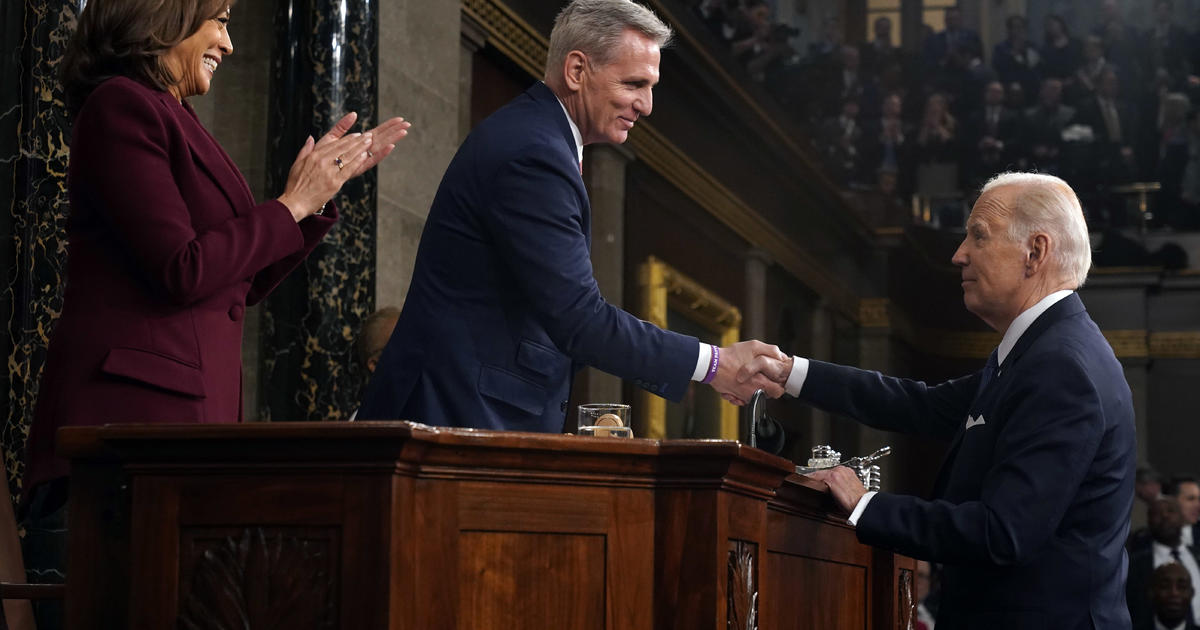
The House speaker’s race continued to drag on Thursday after Rep. Jim Jordan failed to get enough support on the first two ballots — potentially causing a constitutional crisis, since there is nobody second in line for the presidency.
There had been a plan floating earlier Thursday to expand Speaker Pro Tempore Patrick McHenry‘s powers until January, giving Jordan time to shore up support. But after a contentious three-hour Republican conference meeting, several Republican members of Congress said the plan to back McHenry was “dead” and Jordan reversed course and said he support another floor vote.
Without a permanent speaker, the House has been unable to conduct any business, including voting on a resolution supporting Israel amid the war with Hamas. Further, the government is also set to shut down on Nov. 17 unless a spending deal can be reached.
In addition to leading the lower chamber, the House Speaker is second in line for the presidency. Without a permanent speaker, the next person in line for the presidency would be Sen. Patty Murray, the Senate president pro tempore.
Casey Burgat, legislative affairs program director at George Washington University, said it was his interpretation that McHenry is not eligible to be in the line of succession since he does not have the official title designated by the constitution and the 1947 Presidential Line of Succession Act.
What is the line of succession?
The line of succession is who will become president if the president dies, or the 25th Amendment is invoked because the president can’t perform his or her duties.
In the original act in 1792, the Senate president pro tempore was second in line for the presidency and the Speaker of the House was third in line. Congress had removed them in 1886 and replaced them with Cabinet officials.
But when Harry Truman became president after the death of Franklin Roosevelt, Truman put the elected officials in the line of succession, but he put House Speaker, then held by his friend Sam Rayburn, as second in line and the Senate president pro tempore as third.
President Biden’s Cabinet has two naturalized U.S. citizens, who are barred via the Constitution from becoming president, although the White House has them listed as in the line of succession on WhiteHouse.gov.
Who is in the line of succession?
The line of succession as outlined by the Constitution and the 1947 Presidential Line of Succession Act is as follows:
Vice President Kamala Harris
Speaker of the House — Vacant
Sen. Patty Murray, Senate president pro tempore
Secretary of State Antony Blinken
Secretary of the Treasury Janet Yellen
Secretary of Defense Lloyd Austin
Attorney General Merrick Garland
Secretary of the Interior Deb Haaland
Secretary of Agriculture Tom Vilsack
Secretary of Commerce Gina Raimondo
Secretary of Labor – held by Acting Labor Secretary Julie Su, who has not been confirmed by Congress, although the White House has listed her as in the line of succession. Several Republican senators have written to the White House contesting her place on the line of succession.
Secretary of Health and Human Services Xavier Becerra
Secretary of Housing and Urban Development Marcia Fudge
Secretary of Transportation Pete Buttigieg
Secretary of Energy — Jennifer Granholm is a naturalized U.S. citizen, although she is listed by the White House as in the line of succession.
Secretary of Education Miguel Cardona
Secretary of Veterans Affairs Denis McDonough
Secretary of Homeland Security — Alejandro Mayorkas is a naturalized U.S. citizen, although he is listed by the White House as in the line of succession.
What does the Constitution say about the line of succession without a House speaker?
There isn’t anything in the constitution about what to do in this type of situation. When the House voted on Oct. 3 to remove House Kevin McCarthy as speaker, it was the first time in history a sitting speaker had been removed in a vote. There have been instances when the House has been without a speaker while it is in session, but that was because the sitting speaker had died — and the House moved quickly to put in a replacement.
“This is a contingency that the [Constitution] didn’t specify as a likelihood and when that doesn’t happen, then they leave it unmet — and here we are,” Burgat said.
According to Burgat, the longer the House goes without electing a permanent speaker, the longer the likelihood of a “constitutional crisis.”
“Particularly when the parties are opposite and given our polarized climate, you don’t want these very important constitutional questions to happen around them,” Burgat said. “We want both sides to agree on exactly what would happen, given, God forbid, the worst scenario.”

